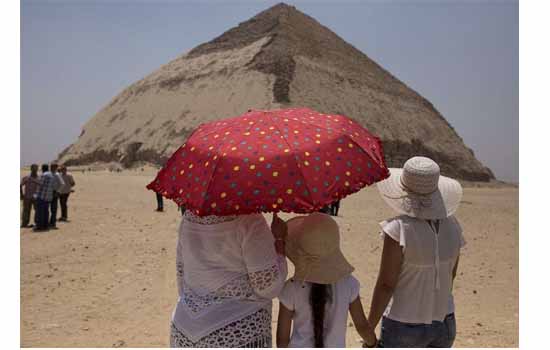Sharjah 24 – Reuters: Egypt opened to visitors on Saturday the “Bent” Pyramid built for pharaoh Sneferu, a 101-metre structure just south of Cairo that marks a key step in the evolution of pyramid construction.
They will also be able to enter an adjoining 18-metre high “side pyramid”, possibly for Sneferu’s wife Hetepheres, opened for the first time since its excavation in 1956.
The “Bent” Pyramid is one of two built for Fourth Dynasty founding pharaoh Sneferu in Dahshur, at the southern end of the Memphis necropolis that starts at Giza.
Its appearance is unusual. The first 49 metres, which have largely kept their smooth limestone casing, are built at a steep 54 degree angle, before tapering off in the top section.
The angular shape contrasts with the straight sides of Sneferu’s Red Pyramid just to the north, the first of ancient Egypt’s fully formed pyramids and the next step towards the Great Pyramid of Giza.
Architects changed the angle when cracks started appearing in the structure, said Mostafa Waziri, secretary general of Egypt’s Supreme Council of Antiquities.
Authorities are seeking to promote tourism at Dahshur, about 28km (17 miles) south of central Cairo. The site lies in the open desert, attracts just a trickle of visitors, and is free of the touts and bustle of Giza.
As they opened the pyramids, archaeologists presented late-period mummies, masks, tools and coffins discovered during excavations that began near the Dahshur pyramids last year and are due to continue.
Archaeologists also unveiled the nearby tomb of Sa Eset, a supervisor of pyramids in the Middle Kingdom, which has been closed since its excavation in 1894 and contains finely preserved hieroglyphic funerary texts.
Foreign ambassadors invited to attend the archaeological announcements were led sweating into the tight spaces of the tomb, which is not expected to be opened to the public for another two years.




